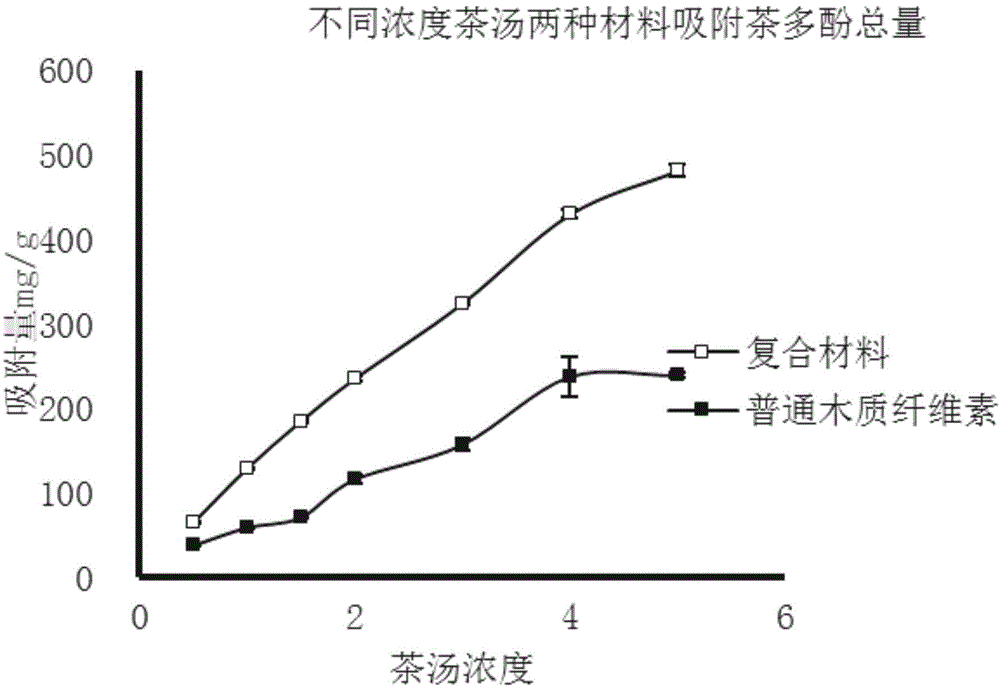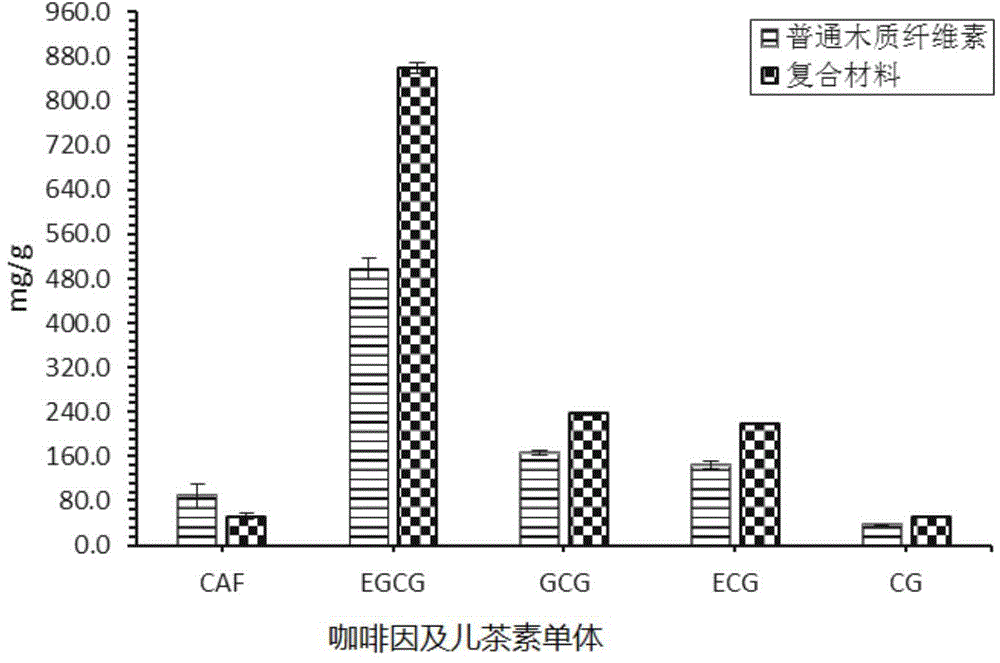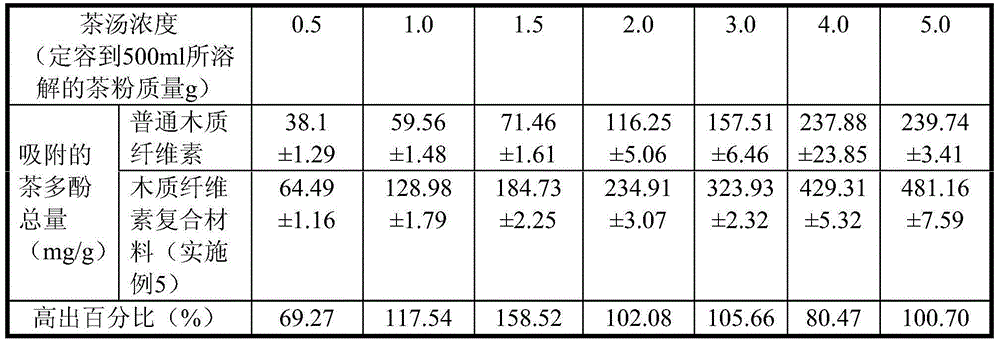Preparation method of lignocellulose composite material for adsorbing plant polyphenol
A technology of lignocellulose and composite materials, which is applied in the field of natural polymer adsorption materials, can solve the problems of being unsuitable for food additives, achieve good physical stability, improve adsorption capacity, and not easily swell
- Summary
- Abstract
- Description
- Claims
- Application Information
AI Technical Summary
Problems solved by technology
Method used
Image
Examples
Embodiment 1
[0038] Embodiment 1, a kind of lignocellulose composite material preparation method that is used for plant polyphenol adsorption, carries out the following steps successively:
[0039] 1), weigh 0.5g of chitosan, add 5ml of water (just to submerge the chitosan), add dropwise glacial acetic acid (about 0.1ml) until the chitosan dissolves, and obtain a chitosan solution;
[0040] 2), weigh 0.25g of gelatin, add 5ml of distilled water, and heat until the gelatin melts to obtain a gelatin solution;
[0041] 3) Pour the gelatin solution into the chitosan solution, then add 1g of lignocellulose, stir evenly, freeze-dry (dry at -50°C for 24h), disperse (particle size 1-2mm), heat treatment at 80°C 2h.
Embodiment 2
[0043] Embodiment 2, a kind of lignocellulose composite material preparation method for plant polyphenol adsorption, carries out the following steps in sequence:
[0044] 1), take by weighing 1.13g chitosan, add water 11ml (just submerge chitosan), add dropwise glacial acetic acid (0.2ml) until chitosan dissolves;, obtain chitosan solution;
[0045] 2), weigh 2.75g of gelatin, add 10ml of distilled water, and heat until the gelatin melts to obtain a gelatin solution;
[0046] 3) Pour the gelatin solution into the chitosan solution, then add 1g of lignocellulose, stir evenly, freeze-dry (dry at -50°C for 24h), disperse (particle size 1-2mm), heat treatment at 80°C 2h.
[0047] The polyphenol adsorption capacity of the obtained material was 167.54 mg g -1 .
Embodiment 3
[0048] Embodiment 3, a kind of lignocellulose composite material preparation method for plant polyphenol adsorption, the following steps are carried out in sequence:
[0049] 1), weigh 2g of chitosan, add 20ml of water (just to submerge the chitosan), add dropwise glacial acetic acid (about 0.4ml) until the chitosan dissolves, and obtain a chitosan solution;
[0050]2), weigh 5g of gelatin, add 20ml of distilled water, and heat until the gelatin melts to obtain a gelatin solution;
[0051] 3) Pour the gelatin solution into the chitosan solution, then add 1g of lignocellulose, stir evenly, freeze-dry (dry at -50°C for 24h), disperse (particle size 1-2mm), and heat-treat at 80°C 2h.
[0052] The polyphenol adsorption capacity of the obtained material was 171.44 mg g -1 .
PUM
 Login to View More
Login to View More Abstract
Description
Claims
Application Information
 Login to View More
Login to View More - R&D
- Intellectual Property
- Life Sciences
- Materials
- Tech Scout
- Unparalleled Data Quality
- Higher Quality Content
- 60% Fewer Hallucinations
Browse by: Latest US Patents, China's latest patents, Technical Efficacy Thesaurus, Application Domain, Technology Topic, Popular Technical Reports.
© 2025 PatSnap. All rights reserved.Legal|Privacy policy|Modern Slavery Act Transparency Statement|Sitemap|About US| Contact US: help@patsnap.com



